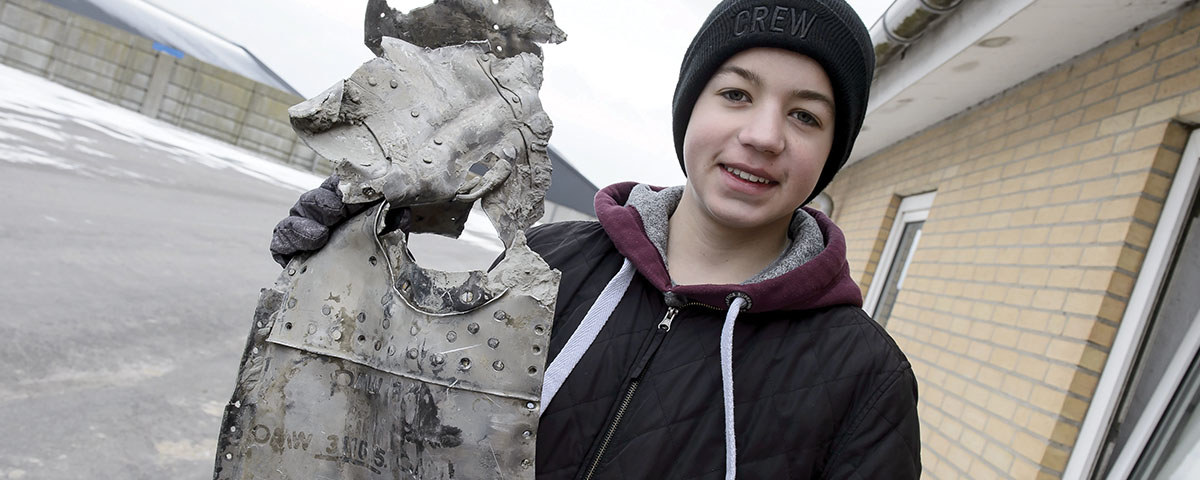The family dismissed it as an old man’s tall tale.
Klaus Kristiansen’s grandfather claimed that he had seen a German plane crash into a bog on the family farm in Birkelse, on Denmark’s Jutland Peninsula; gramps said he had been helping to bake cookies at the time, November—maybe December—1944.
Flash-forward to the present day: when Klaus’s 14-year-old son, Daniel, was casting about early this year for how to handle a homework assignment on World War II, Klaus jokingly suggested they look for the wreckage.
The teenager proved enthusiastic.
So out they went with a metal detector and rummaged around the property. The machine sounded and they began to dig, unearthing metal fragments. Intrigued, they borrowed a neighbor’s excavator and dug some more.
The result “was like opening a book from yesterday,’’ Klaus Kristiansen told CNN.
Turns out they had discovered the wreck of a Messerschmitt Bf 109.
They also found the remains of the pilot, his uniform and identification number, a broken machine gun, engine parts, a wallet containing coins and wrapped condoms, a wristwatch, a diary and flight log, and ration stamps for the canteen at the German airbase in nearby Aalborg.
Using the detritus found at the site, researchers from the Historical Museum of Northern Jutland identified the pilot as Hans Wunderlich—just 19 when he died. Luftwaffe records show Wunderlich crashed on October 10, 1944, but that “excavation work was postponed, since this was in vain.” German authorities reported that Wunderlich has no living kin; the government plans to retrieve his remains from the museum and bury them. The wreckage and Wunderlich’s belongings will stay at the museum, which is considering displaying them in a temporary exhibition.
Klaus Kristiansen’s late grandfather clearly has been vindicated. “He was telling a lot of stories, my grandfather,” Klaus told BBC. “Some of them were not true, and some of them were true—but this one was true. Maybe I should have listened to him a bit more when he was alive!”





